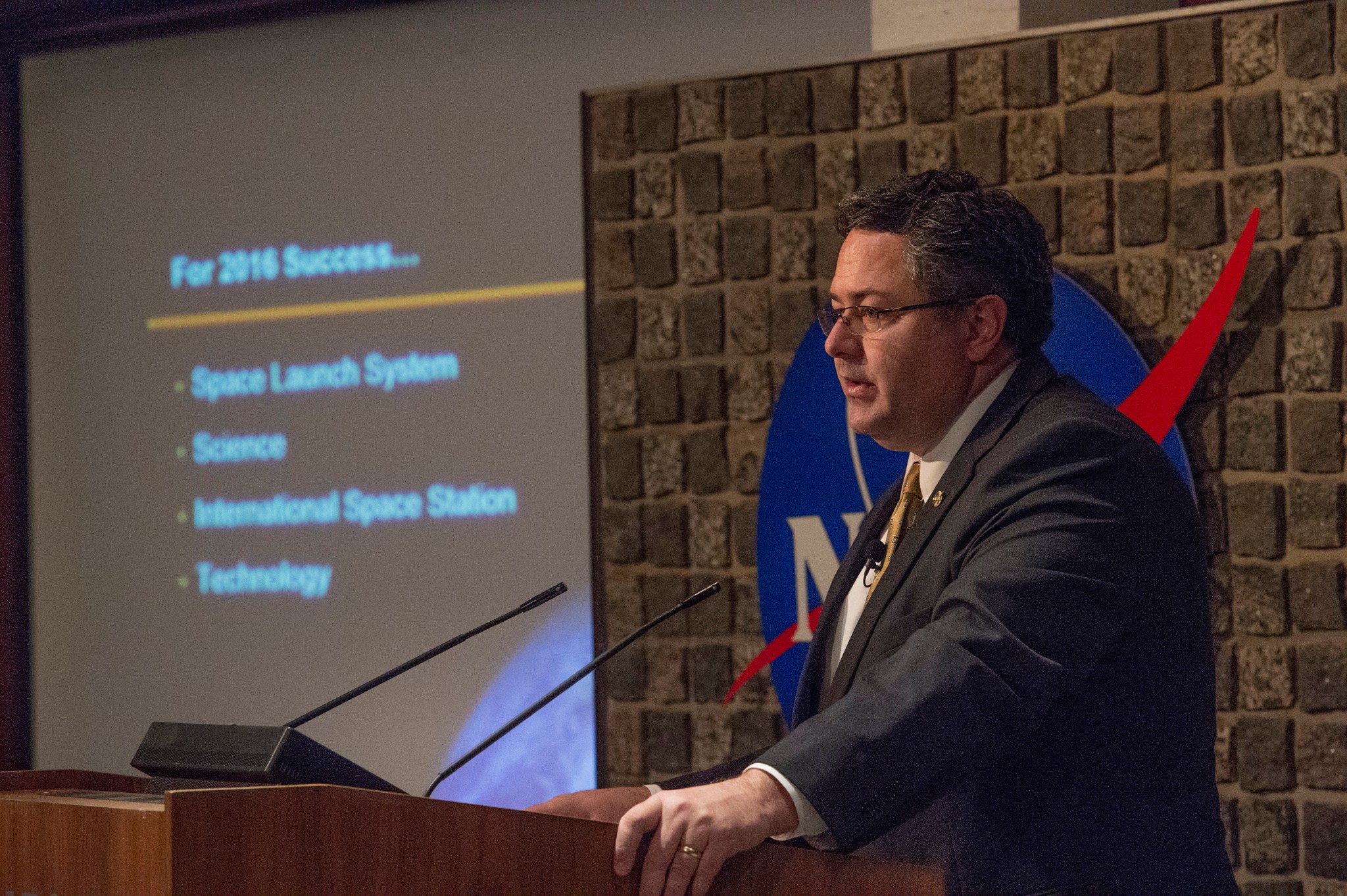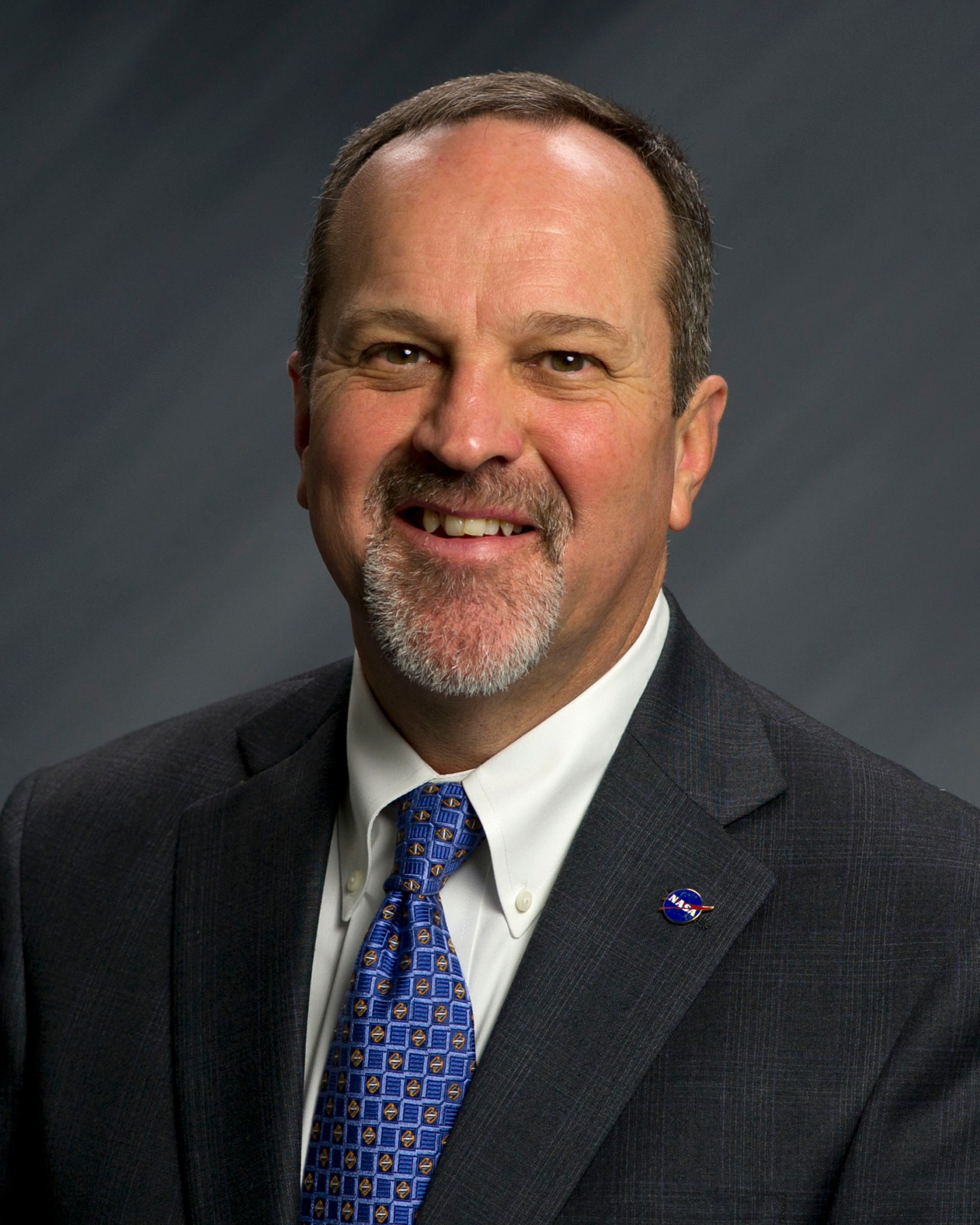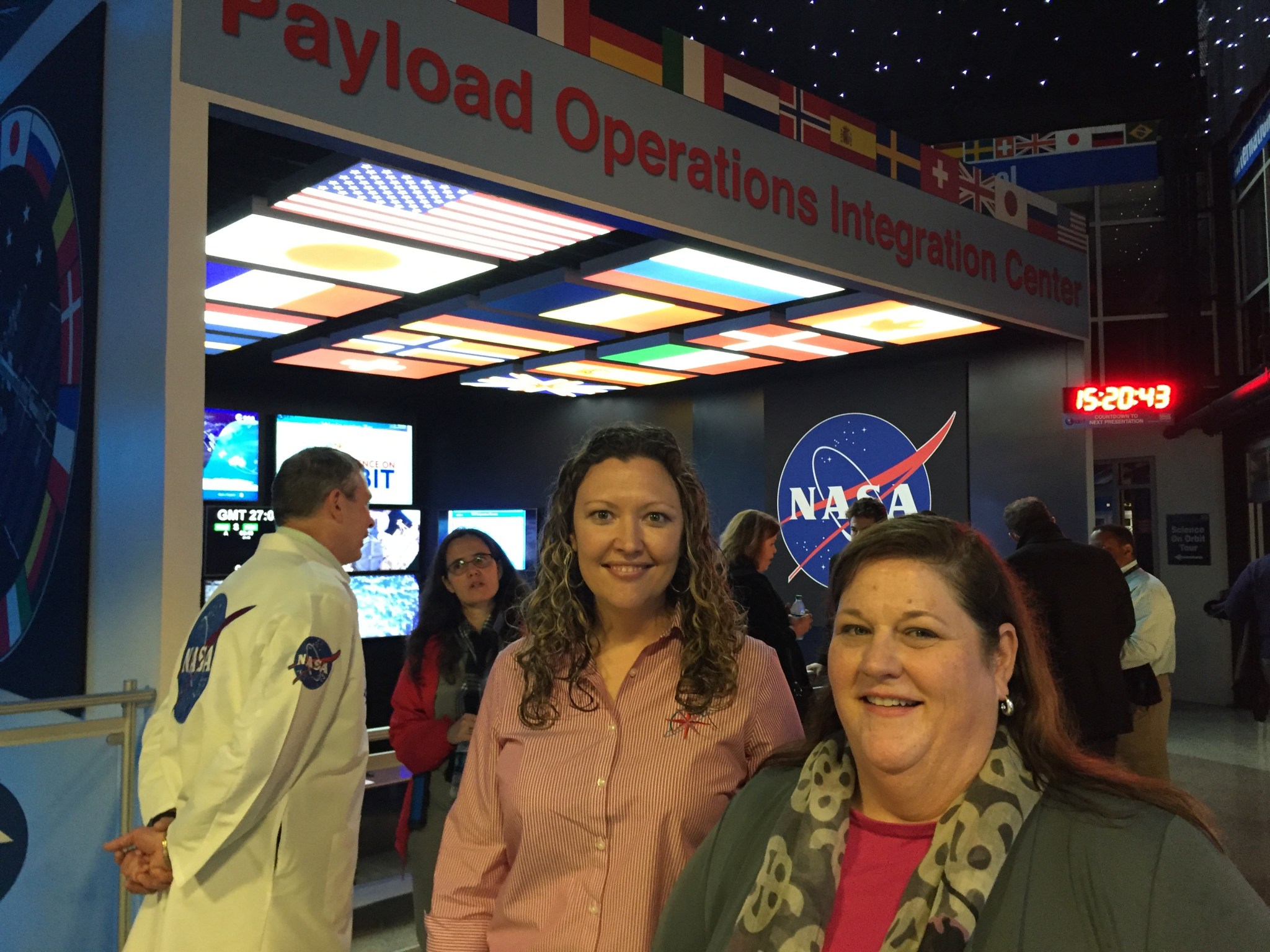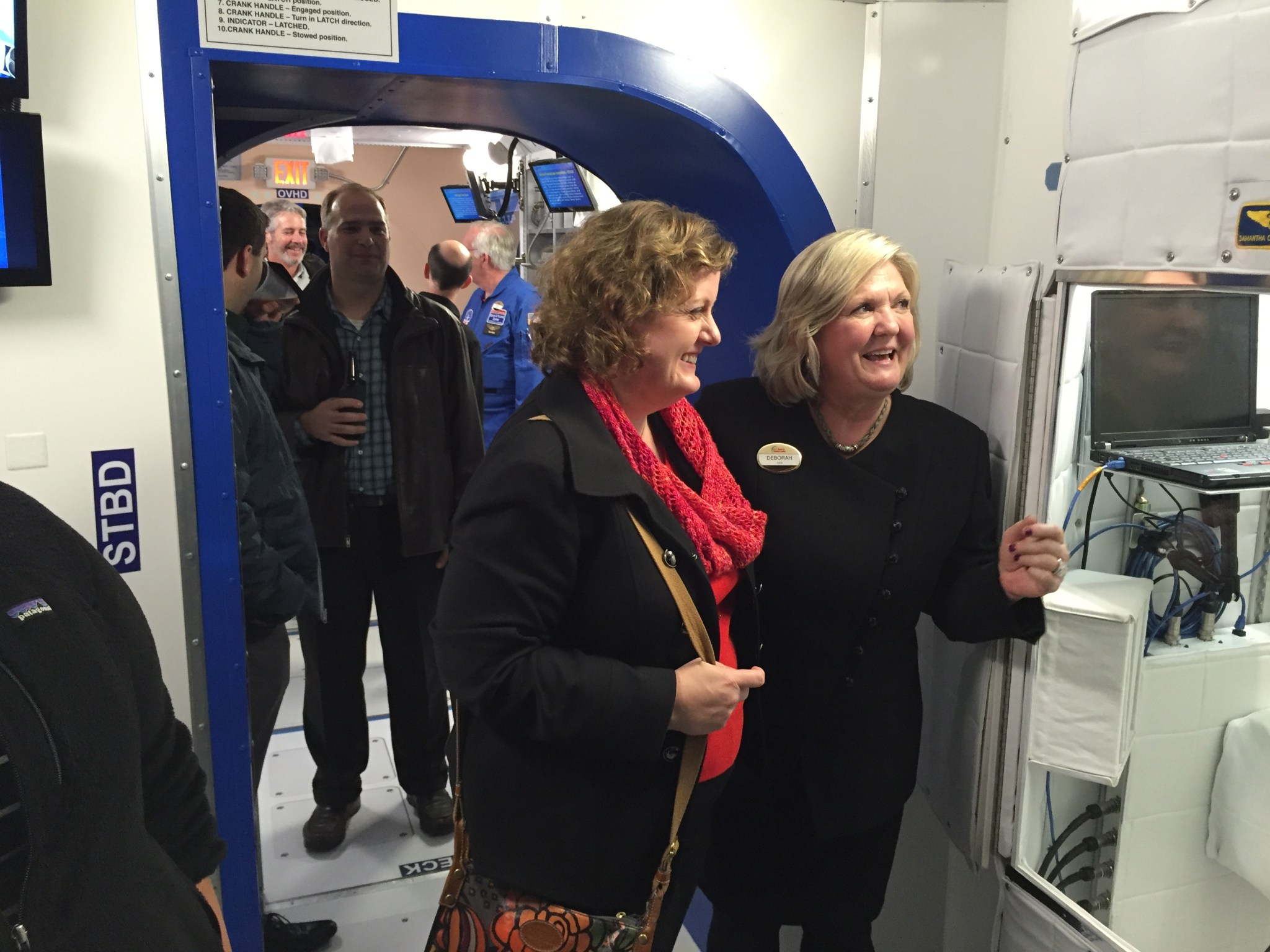In This Week’s Star
- Center Director Todd May Discusses ‘State of Marshall’
- Jerry Cook Named Deputy Director of NASA’s Space Launch System Program
- Science Doesn’t Take a Snow Day: Payload Operations Integration Center Supports Space Station Crew Through Any Storm
- New Space & Rocket Center Exhibit in Huntsville Focuses on Space Station and NASA’s Support of Science from the Ground
- Marshall to Commemorate Black History Month With February Events
- This Week in NASA History: STS-130 Launches to Deliver Tranquility to Space Station — Feb. 8, 2010
- Announcements of SLS CubeSats, New Marshall Director Featured on ‘This Week @NASA’
- Obituaries
Center Director Todd May Discusses ‘State of Marshall’
By Brian C. Massey
Following delivery of President Barack Obama’s fiscal year 2017 budget proposal to the U.S. Congress on Feb. 9, NASA Marshall Space Flight Center Director Todd May held an all-hands meeting with the Marshall workforce to discuss the administration’s budget request in relation to the center and its programs and mission.
The president’s overall FY 2017 budget request for NASA is $19 billion. “This is a tremendous signal of the nation’s support for space exploration,” said May. “The work done at Marshall makes it easy to garner this type of support. The budget advances the nation’s bipartisan space exploration plan, ensuring the United States will remain the world’s leader in space exploration for years to come.”
“At Marshall, we have received consistently steady funding, which demonstrates a recognition of our ability to make significant progress on our journey to Mars,” May added “The proposed 2017 budget provides stability for our workforce and the resources to advance our diverse portfolio of human and scientific exploration.”
Marshall, with its FY 2017 funding, according to May, will continue building the Space Launch System — the only rocket powerful enough to send humans into deep space; will continue growing the proving ground to demonstrate technologies needed for long-duration missions; will continue reshaping the Marshall skyline to support the efforts of future generations; will continue developing in-space propulsion; managing scientific experiments to push the limits of discovery; and will continue maturing scientific instruments to study the planet, sun and the outer edges of the solar system.
Marshall’s proposed budget for FY 2017 is $2.1 billion, including $1.2 billion for the continued development of SLS — the Marshall-managed rocket, which will be the largest ever built and carry astronauts farther into space than ever before, including to an asteroid and ultimately Mars. “SLS is no longer a vision,” said May. “Flight hardware production has already started, and qualification articles for Exploration Mission-1 will be completed by this summer. SLS will dramatically change the way humans and robots explore space, enable unprecedented science and create new markets in cislunar space.”
Obama’s proposed budget also calls for $206 million for space operations, which includes the International Space Station and the commercial crew and cargo resupply programs. “The ISS is our test bed for human exploration beyond low-Earth orbit,” May said. “With every spacewalk, rendezvous and dock — and through our space science experiments — NASA and our partners are living and working in space near Earth to prepare for the longer, more distant SLS proving ground missions.”
Changes can already be seen in Marshall’s skyline as construction of two new structural test stands is well underway. This summer, testing will begin in these stands of the core and upper stages of SLS. Also this year, ground will break on Building 4221, which will mirror the recently constructed Building 4220.
The proposed budget will also fund the Centennial Challenges Program, Technology Demonstration Missions Program and Marshall’s many planetary and Earth science missions.
“Marshall’s commitment, diversity, vast skills, expertise and perseverance make all these things possible,” said May. “The goals we’ve set are lofty, and now is not the time to rest on our accomplishments. We as a team must remain laser-focused on meeting our commitments. We must execute our plans and deliver to our nation. We must continue to prove that we warrant the confidence they put in us.”
“The proposed funding,” he added, “will allow us to carry on the complex engineering, program management, technology development, mission support and scientific research required to make human exploration a reality.”
“Each Marshall team member is essential to this great story,” said May. “All of us together will take humans deeper into space than ever before.”
For more information about the NASA FY 2017 budget proposal, click here.
Massey, an ASRC Federal/Analytical Services employee and the Marshall Star editor, supports the Office of Strategic Analysis & Communications.
Jerry Cook Named Deputy Director of NASA’s Space Launch System Program
By Megan Davidson
Jerry Cook has been named deputy director of NASA’s Space Launch System Program at the Marshall Space Flight Center. SLS will be the most powerful rocket in the world for deep-space missions, including to an asteroid and ultimately to Mars.
Appointed to the position in December 2015, Cook shares responsibility for all facets of the SLS Program, including programmatic and technical planning, procurement, development, testing, evaluation, production, and operation of the integrated SLS.
Cook has more than 30 years of experience in both an operational and developmental environment of strategic planning, program management and program execution. He has held numerous key positions throughout his NASA career, including chief engineer for Exploration Systems Development at NASA Headquarters, and deputy director of NASA’s Stennis Space Center. Cook also was associate program manager for the SLS Program, while concurrently serving as acting manager of the SLS Program Planning and Control Office.
Cook began his NASA career in 1985 as a test engineer at Marshall in the Technology Evaluation Department. He later served as a test conductor for the Space Shuttle Main Engine Test Program.
He earned a bachelor’s degree in mechanical engineering in 1984 from the University of Alabama in Tuscaloosa. He has authored and co-authored numerous technical papers and books on aerospace and propulsion. Cook was selected as a Distinguished Departmental Fellow of the Mechanical Engineering Department at the University of Alabama in Tuscaloosa in 2007, and was inducted as a Distinguished Fellow into the university’s College of Engineering in 2014. He currently serves as a member of the school’s Mechanical Engineering Department Advisory Board.
A native of Greensboro, Alabama, Cook and his wife, Felicia, reside in Huntsville. They have a son, who recently graduated from the University of Alabama in Tuscaloosa, and a daughter, who is currently attending the same university.
Davidson, an ASRC Federal/Analytical Services employee, supports the Office of Strategic Analysis & Communications.
Science Doesn’t Take a Snow Day: Payload Operations Integration Center Supports Space Station Crew Through Any Storm
By Bill Hubscher
Snowstorms can quickly change the plans of many people in North Alabama.
Schools let out early, businesses close, events are cancelled and the streets empty. But one group of NASA employees braves the elements to be at their posts — because it doesn’t snow in space. And someone has to be on site at NASA’s Marshall Space Flight Center to keep science experiments up and running on the International Space Station.
For nearly 15 years, the Payload Operations Integration Center at Marshall has been mission control for science on the orbiting laboratory. Marshall flight controllers have helped space station crew members — 24 hours a day, 365 days a year — conduct more than 1,700 investigations for scientists and students in over 80 countries, monitoring experiments and assisting the crew step-by-step in this high-tech facility. Controllers even operate many experiments while the space station crew is off duty or sleeping.
While snowfall can bring activities and business to a halt, the space station crew still has science experiments to complete. This means people need to be on console at the operations center to support the ongoing scientific research in space.
“In the event of inclement weather, our main concern is always the safety of our team,” said Tim Horvath, payload operations manager at Marshall. “We don’t want to put them in a dangerous situation. If severe weather is forecast, we look at how we can scale back our staffing and still be able to accomplish our mission in the near-term. In some cases, we find flight controllers who live close to the center, have an easy drive or have a four-wheel-drive vehicle that will enable them to get to work safely.”
The team has a standard plan for communicating to ensure everyone is aware of the staffing plans. Managers are notified if there are issues, and they let the team know that everyone is accounted for. Staffing the Payload Operations Integration Center during inclement weather has been the standard operating procedure since the control room began around-the-clock operations in March 2001, but the team has learned from more recent weather events and is fine-tuning its procedures.
“We have increased our support of space station science since we started in 2001,” said Rick Rodriguez, one of the payload operations directors who leads Marshall’s team of flight controllers. “And last year, when we were hit with back-to-back weather events, we learned our procedures needed updating to reflect our increased role. We are revising our official standard operating procedures for inclement weather to include not only the team in the control room, but others who provide support behind the scenes.”
The space station’s assembly was completed in 2011, and now the crew devotes more time to science each week. This means more involvement by the payload operations team operating experiments now on the station while working with scientists around the world and future station crews to create plans for upcoming investigations.
The team’s role will become even more important when commercial crew vehicles start operations in 2017. Commercial crew vehicles will be able to transport an additional crew member to the space station whose time will be completely dedicated to conducting science experiments.
Future operational changes may allow Marshall’s dedicated team of professionals to continue their support while safely waiting out the storms from home.
“We hope to provide secure remote access to allow people to do more work from off-site during inclement weather,” said Katie Presson, a payload operations director at Marshall. “But we still have some things to work out. Until then, we will still be here at our posts, supporting the scientific experiments that improve life on Earth.”
Hubscher, an ASRC Federal/Analytical Services employee, supports the Office of Strategic Analysis & Communications.
New Space & Rocket Center Exhibit in Huntsville Focuses on Space Station and NASA’s Support of Science from the Ground
By Bill Hubscher
When visitors to the U.S. Space & Rocket Center sign up for a bus tour of the nearby NASA Marshall Space Flight Center, one of the highlights is a look inside the Payload Operations Integration Center — mission control for science research on the International Space Station.
NASA has now joined with the Space & Rocket Center to create a life-size replica of the Payload Operations Integration Center as part of the space museum’s new exhibit: Science On Orbit.
“The heart and soul of research on station is here at Marshall,” said Julie Robinson, chief scientist of NASA’s space station program. “Visitors to this exhibit will get a glimpse into the steps we take 24 hours a day, every day, to conduct science experiments on orbit. We want them to understand the level of detail and expertise that goes into the discoveries that benefit all of us on Earth.”
The new exhibit features a control room much like the one in the Payload Operations Integration Center at Marshall, where every day flight controllers ensure science investigations go smoothly in orbit, working with astronauts 250 miles overhead. Visitors can sit at any of the exhibit’s individual consoles and get a feel for what it is like for NASA employees who manage and monitor studies in orbit while collaborating with hundreds of scientists around the globe. Flight controllers at Marshall worked with curators at the rocket center to help ensure the accuracy of the control room and the laboratory area.
“It all started with concept drawings and a tour of the space in the museum they wanted to use,” said Katie Presson, one of the payload operations directors who leads Marshall’s team of flight controllers. “We were asked to help make the exhibit authentic, so we fed them ideas and showed them the real control room here at Marshall. We provided some content for their video walls and computers, including the ones that are in their version of the space station environment. Our goal was to show the public an accurate interpretation of the Payload Operations Integration Center, so they can better understand how we help perform science in space every day.”
Visitors to the exhibit will also tour a new, full-scale mock-up of two space station laboratory segments, including a full-scale version of the space station’s Destiny module — the U.S. laboratory built at Marshall. Engineers designed Destiny and other floor-to-ceiling racks so that the maximum amount of science could be conducted in microgravity. The exhibit will help visitors to the space museum to better understand the real-life constraints of living and working in space.
“Science on Orbit is an amazing opportunity for the public, and specifically Space Campers, to see behind the curtain into our role in space station payload operations,” said Justin Cartledge, one of the payload communicators who relays information on space-to-ground voice loops to the space station crew. “They can really get a feel for what it is like to live and work on board the space station. I am proud to have assisted in the development of this exhibit and look forward to volunteering at the museum, talking to the public and trainees about what we do here.”
The exhibit will not only be open to the public, but to thousands of students who attend Space Camp — a week-long immersive experience at the Space & Rocket Center, where students receive hands-on training as they learn to simulate a space mission. Trainees will use the new exhibit to learn more about what it takes to make scientific discoveries in space, which could lead them on a career path to explore deeper into our solar system.
“My hope is that the visitors and Space Campers will gather what they learn here and take it back home,” said Robinson. “We want the public to understand how NASA affects their daily lives while helping students achieve their goals by educating them in the science and engineering disciplines we use every day. After all, whether it is finding better treatments for osteoporosis, discovering new materials to build state-of-the-art technology or putting footprints on the surface of Mars, the students here will be the ones to take that next giant leap.”
Hubscher, an ASRC Federal/Analytical Services employee, supports the Office of Strategic Analysis & Communications.
Marshall to Commemorate Black History Month With February Events
NASA’s Marshall Space Flight Center will honor Black History Month in February with two events. Marshall’s Office of Diversity and Equal Opportunity, which sponsors both events, invites all civil-service employees and contractors to attend.
On Feb. 11, the Voices of Marshall Chorus, directed by Marshall engineer Kim Jones, will perform from 11 a.m. to 1 p.m. in the Building 4203 cafeteria. Founding members of the Huntsville-area jazz band, Abstract, will join the chorus.
On Feb. 18, Dr. George Fraser will provide Marshall’s keynote address in celebration of Black History Month. Fraser, a motivational speaker and bestselling author, will speak at 10 a.m. in Morris Auditorium, Building 4200, on the subject of “Succeeding in Tough Economic Times: The Power and Importance of the Relationships in Our Lives.” His address will reference this year’s Black History Month theme, “Hallowed Grounds: Sites of African-American Memories.”
Fraser is the author of “Race for Success,” “Success Runs in Our Race,” “Click” and most recently, with coauthor Les Brown, “Mission Unstoppable: Extraordinary Stories of Failure’s Blessings.” A native of Brooklyn, New York, he is chairman and chief executive officer of Frasernet Inc., a company he founded nearly 30 years ago to provide global networking for people of African descent. Among his many achievements since, he founded two inner-city charter schools, which provide education for hundreds of African-American children.
Music for the event will be provided by the First Missionary Baptist Church Child Development Center and Academy of Huntsville and by the Marshall Chorus. Marshall Center Director Todd May will welcome team members and Marshall Associate Director-Technical Paul McConnaughey will introduce Fraser.
After his address, Fraser will meet Marshall team members in the Building 4200 lobby, where he will sign copies of his book “Mission Unstoppable” — available for purchase at the Marshall Space Shop in Building 4203. Also, from 11 a.m. to 12:30 p.m., team members are invited to sample a variety of ethnic foods in P-110, Building 4200.
Marshall’s Black History Month celebration also will include a display in the lobby of Building 4200, depicting local, regional and international historic landmarks that echo the “Hallowed Grounds” theme.
For more information, contact Marshall Equal Employment Manager Janet Washington.
This Week in NASA History: STS-130 Launches to Deliver Tranquility to Space Station — Feb. 8, 2010
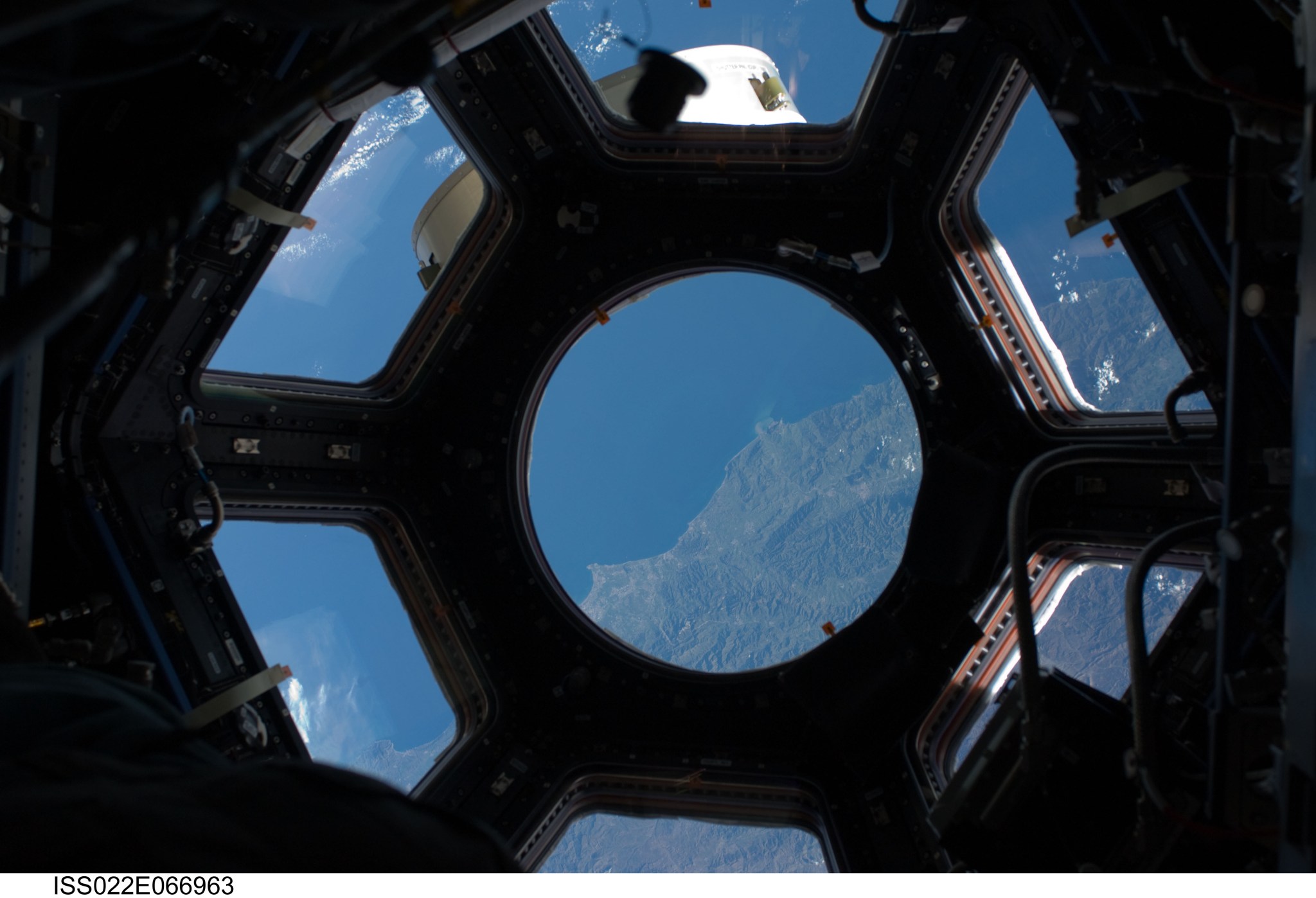
This week in 2010, space shuttle Endeavour and STS-130 launched from NASA’s Kennedy Space Center to deliver Tranquility, also known as Node 3, to the International Space Station. One unique feature of Tranquility is the Cupola, a robotic control station with seven windows that provides a 360-degree view around the station. This photo, one of the first taken through the Cupola, shows the coast of Algeria. The NASA History Program documents and preserves NASA’s remarkable history through a variety of products — photos, press kits, press releases, mission transcripts and administrators’ speeches. For more pictures like this one and to connect to NASA’s history, visit the History Program’s Web page. (NASA)
Announcements of SLS CubeSats, New Marshall Director Featured on ‘This Week @NASA’
Announcements selecting the secondary payloads for the launch of the Space Launch System rocket, as well as the naming of a new center director for NASA’s Marshall Space Flight Center are both featured in the latest edition of “This Week @NASA,” a weekly video program broadcast nationwide on NASA-TV and posted online.
During a Feb. 2 media briefing at Marshall, officials announced the selection of the 13 secondary payloads, which will launch on the inaugural flight of SLS on Exploration Mission 1 and provided an overview of the SLS launch and one of the Marshall managed payloads, Near-Earth Asteroid Scout — that will reconnaissance an asteroid.
Nicknamed CubeSats due to their small shape and size, these 13 low-cost, small satellites will carry science and technology investigations to help pave the way for future human exploration in deep space, including on the journey to Mars. The first flight of SLS, currently scheduled for 2018, will launch an un-crewed Orion spacecraft to a stable orbit beyond the moon. Once there, it will demonstrate and test systems for both the spacecraft and rocket before the first crewed flight of Orion.
In addition, NASA Administrator Charles Bolden named Todd May the new center director for Marshall. May had served as acting director since previous Center Director Patrick Scheuermann retired in November 2015. One of NASA’s largest field installations, Marshall has nearly 6,000 on- and near-site civil service and contractor team members — including those at the Marshall-managed Michoud Assembly Facility — and an annual budget of approximately $2.5 billion. In his new post, May manages a broad spectrum of human spaceflight, science and technology development missions contributing to the nation’s space program.
View this and previous episodes at “This Week @NASA” or at https://www.youtube.com/user/NASAtelevision.
Obituaries
Seldon L. Harp, 61, of New Hope, Alabama, died Feb. 2. He retired from the Marshall Center in 2009 as a supervisory finance manager.
Thomas F. Rowell, 77, of Decatur, Alabama, died Feb. 6. He retired from the Marshall center in 1995 as an aerospace engineer. He is survived by his wife, Tommye S. Rowell.


























